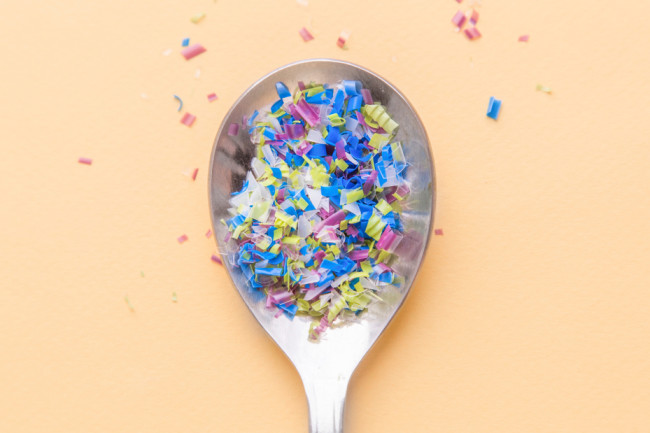
Microplastics, And Why Are They Harmful
7th Apr 2020
What are Microplastics?
Microplastics can come from a variety of sources. Microplastics are pieces of plastic less than 5mm in diameter. They can be primary microplastics, which are tiny particles designed for cosmetics or shed from textiles such as clothing and fishing nets; or they can be secondary microplastics, which are produced when larger plastic items such as water bottles break down due to solar radiation or ocean water. Secondary microplastics result from 'degradable' plastics: read our article here on the difference between degradable, biodegradable, and compostable.

Chemical Pollution
Chemicals attach to microplastics and end up accumulating in higher concentrations in the ocean. Microplastics attract toxic chemical pollutants onto their surfaces. This is of particular problem in the ocean, where chemicals attach to microplastics, which are then driven together by ocean currents, resulting in a high concentration of pollutants in certain ocean areas (the Great Pacific Garbage Patch is one example of currents bringing plastic together). These chemicals can then either leach back out into the environment, or the plastics are eaten by unsuspecting animals and the chemicals absorb into their bodies.
Animal Food
Scientists have found microplastics in almost every marine creature studied. Microplastics can look like fish eggs or other marine food, and have been found in almost every animal species – from plankton to large mammals. Apart from the risk of chemical toxicity, eating plastic instead of food can cause an animal to starve to death. They feel full, so they stop eating, but they cannot digest plastic.
Human Health
We might be breathing in microplastics without realising it. While scientists are not yet sure whether eating fish that have eaten microplastics can impact human health, it is likely there will be some affect. After all, scientists estimate that we eat a credit card or more of plastic each year – that is unlikely to be harmless. However, plastic in our waterways is not the only threat. Scientists have found atmospheric microplastics – microplastics that drift through the air and even occur in rainfall. More than half the microplastics collected were less than 25 microns in diameter, the size that can enter lung tissue. For reference, a human hair is between 50 and 70 microns in diameter. Small particles entering the lungs can have adverse effects, although scientists are still determining what the affect of these plastics will be.
What Can You Do?
Take action to reduce plastic in your life. The first step is to stop using single-use plastic. This is the plastic that becomes endemic in our environment – the plastic that we use once and throw away. However, we also want to phase out reusable plastics – once disposed of, they can break down in the sun's radiation just like single-use plastics. Many household microplastics are generated from washing synthetic clothing. We need washing machines to be fitted with better filters to prevent these microplastics going down the drain, and we need better fabric design so that we don't need to make them out of plastic. If you're a business, and you want to take the first step to becoming plastic-free, why not check out our product page for the alternatives we offer?
Information taken from National Geographic and the US National Library of Medicine. Read about a specific kind of microplastic or 4 reasons you should buy organic on our blog.
Planet Friendly Packaging acknowledges the traditional custodians of the land on which we work. Our thoughts go out to everyone affected by COVID-19. Stay safe.
